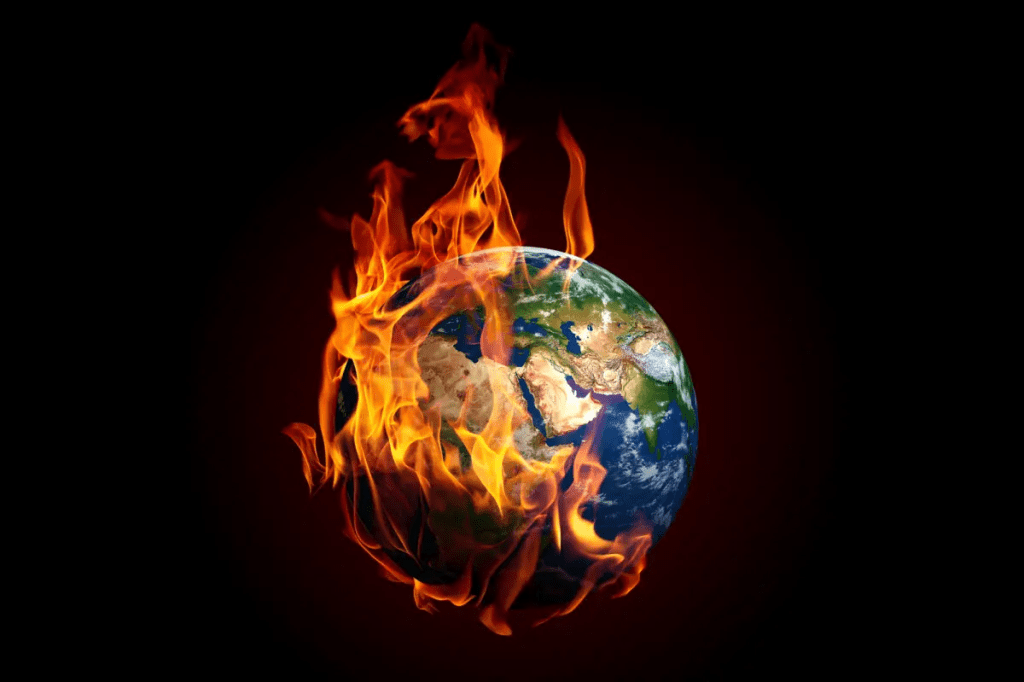In a groundbreaking study, experts at the Potsdam Institute for Climate Impact Research (PIK) have issued a stark warning: even with reduced carbon emissions, global temperatures are projected to rise by an alarming 7°C (12.6°F) by the year 2200. This rapid escalation in global warming could lead to catastrophic consequences such as widespread heatwaves, food shortages, flooding, and extreme weather events. As climate change intensifies, it’s becoming clear that immediate action is needed to avoid an irreversible disaster.
Understanding the Future of Global Warming: A Dire Prediction

In a time when climate change concerns dominate global discussions, a recent study published by the PIK team outlines the potential future of our planet. Scientists used advanced computer models to simulate different emission scenarios, taking into account both human activity and natural processes, to predict the impact of global warming over the next two centuries.
The Prediction: 7°C of Warming by 2200
Despite efforts to reduce carbon emissions, the study warns that Earth’s temperature could rise by up to 7°C by 2200. This temperature increase is significantly higher than previous predictions for low-to-moderate emission scenarios. The Potsdam Institute used the CLIMBER-X model to simulate these changes, considering not only carbon dioxide emissions but also methane releases, plant and animal respiration, and volcanic activity. According to Christine Kaufhold, the lead author of the study, this warming could be catastrophic, triggering extreme weather, food shortages, and rising sea levels.
The Catastrophic Effects of 7°C Warming
If these predictions come to fruition, the consequences will be devastating for the planet and all life on it. Let’s break down some of the key effects scientists anticipate:
Video : The Biggest Myth About Climate Change
1. Heatwaves and Extreme Summer Temperatures
With global temperatures rising dramatically, heatwaves will become more frequent, especially in the summer. Extreme heat can put a strain on the human body, especially for vulnerable populations such as children, the elderly, and those with pre-existing health conditions. Increased temperatures could also lead to a surge in wildfires, especially in dry regions, further exacerbating the environmental and health crises.
2. Global Famine and Food Shortages
The agricultural systems we rely on will struggle under such extreme heat. Common crops, such as wheat, rice, and corn, will be unable to thrive in the scorching temperatures, leading to widespread food shortages. As the study points out, the most vulnerable regions—especially those that rely on rain-fed agriculture—will be hardest hit. This could result in famine, malnutrition, and economic collapse in countries already facing food insecurity.
3. Coastal Flooding Due to Rising Sea Levels
As the planet warms, ice caps and glaciers will continue to melt, contributing to rising sea levels. Coastal cities will become increasingly vulnerable to flooding, forcing millions of people to abandon their homes. The migration from coastal regions will likely create overcrowded inland areas and increase the pressure on resources, leading to potential conflicts over water, land, and food.
4. Increased Frequency of Extreme Weather Events
Increased global temperatures will also result in intense weather patterns. We will likely witness an increase in the frequency and severity of storms, hurricanes, droughts, and tropical cyclones. These extreme weather events could devastate entire communities, damaging infrastructure, displacing populations, and causing economic losses that could take decades to recover from.

The Carbon Cycle Feedback Loops: A Growing Concern
One of the key findings of the study is the carbon cycle feedback loops, which could amplify global warming far beyond initial predictions. These feedback loops occur when changes in the environment trigger further changes that exacerbate climate change. For example, as permafrost thaws due to rising temperatures, more carbon dioxide and methane are released into the atmosphere, increasing the greenhouse effect and warming the planet further.
How Methane and Carbon Cycle Feedbacks Intensify Warming
Methane, a potent greenhouse gas, is released during processes such as landfill breakdown and wetland respiration. As global temperatures rise, the amount of methane released from natural sources will increase, exacerbating the warming trend. This feedback mechanism makes it much harder to predict the ultimate outcome of global warming, as each change can intensify the effects.
The Window for Action Is Closing: Urgent Need for Carbon Reduction
According to the researchers, the Paris Agreement—which aims to limit global warming to below 2°C above pre-industrial levels—is rapidly becoming an unreachable goal unless global carbon emissions are drastically reduced. Scientists believe that carbon reduction efforts must accelerate even further if we hope to stay within the limits outlined by the Paris Agreement.

Current Emission Reduction Is Not Enough
Even if emissions begin to decrease today, the study predicts there’s still a 10% chance that the Earth will warm by 3°C (5.4°F) by 2200, which is already well beyond the goals set by the Paris Agreement. This stark reality highlights the need for immediate and decisive action to curb emissions and accelerate carbon removal technologies.
What Can Be Done to Avoid This Future?
The only way to avoid a 7°C temperature rise and its catastrophic consequences is through rapid and widespread changes in global policies and energy consumption. The study stresses the need for a transition to renewable energy sources, the adoption of carbon capture and storage technologies, and the implementation of global climate policies that prioritize the health of the planet.
The Importance of Fast Action
As Matteo Willeit, a co-author of the study, points out, “Carbon reduction must accelerate even more quickly than previously thought” to stay within the targets set by the Paris Agreement. Every year of inaction compounds the effects of global warming, leaving future generations with a more challenging and dangerous climate to navigate.
Video : How Earth Would Look If All The Ice Melted
Conclusion: Our Actions Today Will Shape the Future
The future of our planet is at a crossroads. The study conducted by the Potsdam Institute for Climate Impact Research offers a chilling glimpse into the possible future we face if current trends continue. However, the solutions are clear: we must take immediate and bold action to reduce emissions, shift to sustainable energy sources, and invest in technologies that can reverse the damage we’ve done. The window for making meaningful change is rapidly closing, and our actions today will determine the future of life on Earth for generations to come.
To secure a livable future for ourselves and future generations, the world must unite and act quickly. Global warming is not just a political issue—it’s a physical reality that requires urgent and sustained efforts from all corners of society. The time to act is now.


